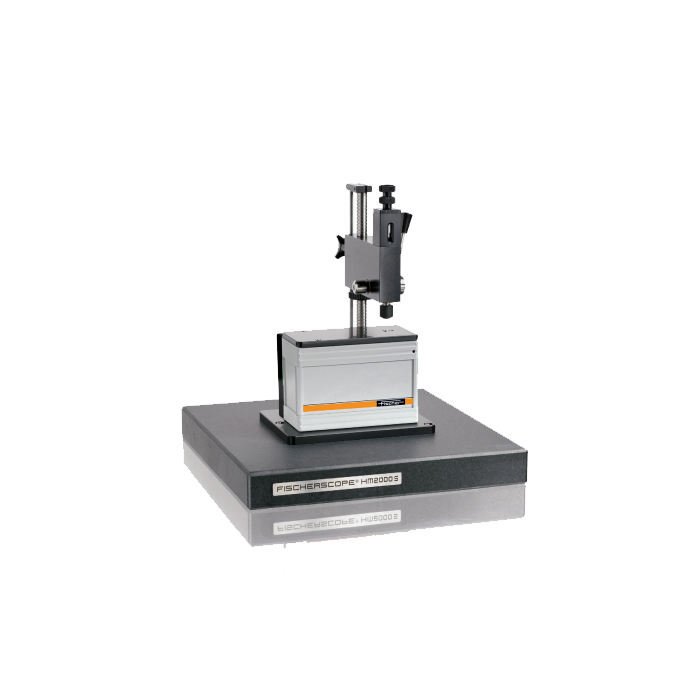
The FISCHERSCOPE HM2000 S is ideally suited for the manual measurement of mechanical and elastic material properties in the inspection of inbound goods or the testing of fabricated goods. Uncomplicated construction and high quality components make this an outstanding instrument for measuring nanoindentation. Without requiring special sample preparation, test specimens are positioned by hand and material parameters such as Martens hardness, Vickers hardness, elastic modulus of indentation or creep are measured quickly and accurately. Fischer places value on measurement instruments that offer a long service life: if your requirements for measurement technology change, the entry-level model for nanoindentation measurement can be upgraded to the semi-automatic variant, HM2000.
The FISCHERSCOPE HM2000 S is ideally suited for the manual measurement of mechanical and elastic material properties in the inspection of inbound goods or the testing of fabricated goods. Uncomplicated construction and high quality components make this an outstanding instrument for measuring nanoindentation. Without requiring special sample preparation, test specimens are positioned by hand and material parameters such as Martens hardness, Vickers hardness, elastic modulus of indentation or creep are measured quickly and accurately. Fischer places value on measurement instruments that offer a long service life: if your requirements for measurement technology change, the entry-level model for nanoindentation measurement can be upgraded to the semi-automatic variant, HM2000.

Measuring head suitable for the measurement of creep at constant temperatures over several hours
Equipped with high-performance WIN-HCU software, which supports intuitive operation of the nanoindentation and the evaluation of numerous material parameters
Nanoindentation measurement of samples with simple geometries
Determination of the plastic and elastic properties of paint coatings to assess the hardness, elasticity and stability of the painted surface, for example for quality control in the automotive industry
Determination of atmospheric influences on paint coatings
Testing of the wear-resistance of thin anodized layers (hard anodizing) on aluminum profiles
Control of decorative and functional electroplated layers
Testing of PVD and CVD layers
Proving the scratch and abrasion resistance of coatings
Testing of DLC layers
subscribe to receive promotions and offers, and download the content
You have successfully subscribed to the newsletter
There was an error while trying to send your request. Please try again.
Thanks for your download!
SAVE CLOSE THIS MESSAGE AND CLICK THE PDF YOU WANT TO DOWNLOAD, WE ARE HAPPY TO BE ABLE TO OFFER WHAT YOU WERE LOOKING FOR